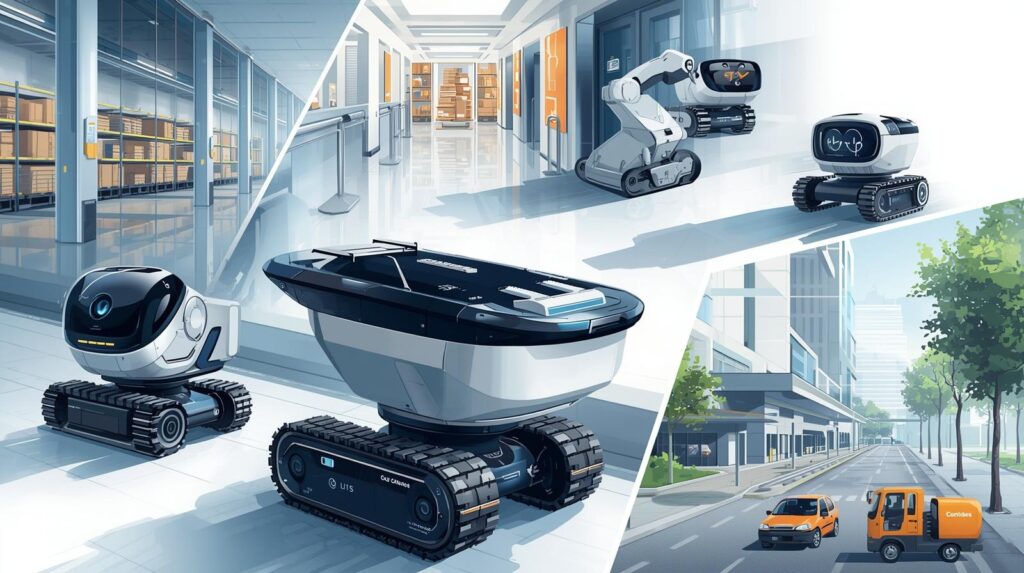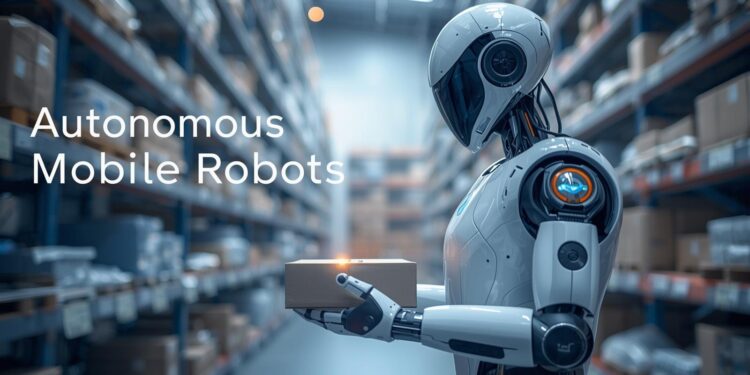In recent years, autonomous mobile robots (AMRs) have shifted from being a futuristic concept to a practical reality, transforming industries with their versatile applications. These robots are no longer confined to science fiction; they are here and making a significant impact in various fields. As a thought leader in technological innovations, I am excited to delve into the applications of these autonomous systems and explore their potential to revolutionize the way we conduct business.
Autonomous mobile robots are machines that can navigate and perform tasks in an environment without human intervention. They are equipped with sensors, cameras, and artificial intelligence to make decisions and perform tasks independently. Unlike traditional robots, AMRs do not rely on fixed pathways or human operators. Instead, they can adapt to changing environments, making them ideal for dynamic settings.
The core of autonomous robots lies in their sophisticated technology, which includes:
- Sensors and Cameras: These devices help the robot perceive its environment, detect obstacles, and navigate safely.
- Artificial Intelligence: AI algorithms enable the robot to learn from its surroundings and make informed decisions.
- Connectivity: AMRs are often connected to a network, allowing them to communicate with other systems and receive updates in real-time.
- Power Systems: Efficient power management ensures that the robots can operate for extended periods without interruption.
The versatility of autonomous mobile robots makes them suitable for a wide range of applications. Let’s explore how different industries are leveraging these robots to enhance efficiency and productivity.
In manufacturing and warehousing, AMRs are revolutionizing the way goods are moved and managed. These robots can transport materials, manage inventory, and even assemble products with precision. By automating repetitive tasks, AMRs reduce labor costs and increase operational efficiency.
For instance, Amazon utilizes AMRs in its fulfillment centers to streamline the order-picking process. The robots navigate the warehouse floor, retrieving items and delivering them to human workers for packing. This integration of autonomous systems has significantly reduced order processing times and errors.
The healthcare industry is also benefiting from the adoption of autonomous robots. In hospitals, AMRs are used to transport medical supplies, medications, and even linens, freeing up healthcare professionals to focus on patient care. These robots can navigate crowded corridors and deliver items efficiently, reducing the risk of human error.
Moreover, during the COVID-19 pandemic, AMRs have been deployed for disinfection purposes. Equipped with UV lights or sanitizing sprays, these robots can autonomously clean and disinfect large areas, ensuring a safe environment for patients and staff.
In agriculture, autonomous mobile robots are addressing labor shortages and enhancing productivity. These robots can perform tasks such as planting, weeding, and harvesting with precision. By using sensors and AI, they can assess crop health and optimize farming practices.
For example, companies like John Deere are developing autonomous tractors that can operate without human intervention. These tractors can plow fields, plant seeds, and monitor crop growth, leading to increased yields and reduced resource consumption.
Retailers are increasingly adopting AMRs to enhance customer experience and streamline operations. In stores, robots can assist with restocking shelves, managing inventory, and guiding customers to products. By automating these tasks, retailers can allocate more staff to customer service roles.
Furthermore, some retailers are experimenting with delivery robots that can autonomously transport goods from the store to the customer’s doorstep. This innovation not only reduces delivery times but also lowers transportation costs.

The adoption of autonomous mobile robots offers several advantages:
- Increased Efficiency: AMRs can operate around the clock, ensuring continuous productivity and faster task completion.
- Cost Savings: By automating labor-intensive tasks, businesses can reduce labor costs and minimize human error.
- Scalability: AMRs can be easily scaled to accommodate changing business needs, making them a flexible solution for growing companies.
- Safety: By handling hazardous tasks, AMRs reduce the risk of workplace injuries and improve overall safety.
Despite their benefits, the implementation of autonomous robots comes with challenges:
- Initial Investment: The cost of acquiring and integrating AMRs can be substantial, requiring a careful assessment of ROI.
- Technical Expertise: Organizations need skilled personnel to manage and maintain these systems, which may require additional training.
- Regulatory Compliance: Navigating the regulatory landscape for autonomous systems can be complex, particularly in highly regulated industries.
- Cybersecurity: As connected devices, AMRs are susceptible to cyber threats, necessitating robust security measures.
The potential of autonomous mobile robots is vast, and their applications continue to expand. As technology advances, we can expect AMRs to become even more capable and cost-effective. Innovations in AI, machine learning, and connectivity will further enhance their functionality and reliability.
In the future, we may see AMRs collaborating with other emerging technologies, such as drones and IoT devices, to create integrated systems that transform industries. The ongoing development of autonomous systems presents exciting opportunities for businesses to innovate and stay competitive.
Autonomous mobile robots are reshaping the landscape of multiple industries by automating tasks, improving efficiency, and reducing costs. While challenges remain, the benefits of these systems make them a valuable investment for forward-thinking organizations. As a thought leader in technological innovation, I encourage industry leaders to explore the potential of AMRs and consider how they can be integrated into their strategic plans.
By embracing the possibilities of autonomous systems, businesses can drive growth and innovation, maintaining their competitive edge in an ever-evolving market.




